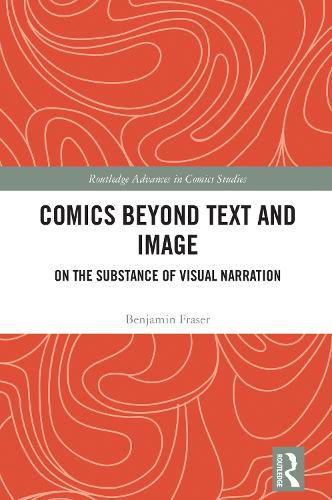Readings Newsletter
Become a Readings Member to make your shopping experience even easier.
Sign in or sign up for free!
You’re not far away from qualifying for FREE standard shipping within Australia
You’ve qualified for FREE standard shipping within Australia
The cart is loading…






Comics Beyond Text and Image conceptualizes comics as "bodies," exploring the substance and the many movements and expressions of comics first and foremost in terms of corporeality.
The book centers on the metaphor of the comics body as a way of opening up our understandings of what comics do. It begins from the position that narrative in comics is corporeal, expressed in and through the visual bodies into which the page can be divided analytically, and from the interaction of the human body with the comics body. Drawing on the philosophy of Baruch Spinoza, the author argues for the primary role of visual narration over textual narration, develops a theory of the comics text as a cohesive and variegated cartography, and shows how thought is expressed in the extensive space of the comics page. This theory is then applied in snapshots of individual comics works that each in their own way continue the philosophical discussions of embodiment.
This book moves beyond traditional modes of narration or narrative and will appeal to students and scholars of comics studies, as well as to those thinking about visual narrative more broadly, and to scholars of Spinoza and Deleuze.
$9.00 standard shipping within Australia
FREE standard shipping within Australia for orders over $100.00
Express & International shipping calculated at checkout
Comics Beyond Text and Image conceptualizes comics as "bodies," exploring the substance and the many movements and expressions of comics first and foremost in terms of corporeality.
The book centers on the metaphor of the comics body as a way of opening up our understandings of what comics do. It begins from the position that narrative in comics is corporeal, expressed in and through the visual bodies into which the page can be divided analytically, and from the interaction of the human body with the comics body. Drawing on the philosophy of Baruch Spinoza, the author argues for the primary role of visual narration over textual narration, develops a theory of the comics text as a cohesive and variegated cartography, and shows how thought is expressed in the extensive space of the comics page. This theory is then applied in snapshots of individual comics works that each in their own way continue the philosophical discussions of embodiment.
This book moves beyond traditional modes of narration or narrative and will appeal to students and scholars of comics studies, as well as to those thinking about visual narrative more broadly, and to scholars of Spinoza and Deleuze.